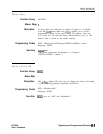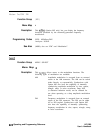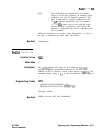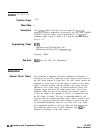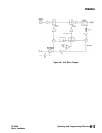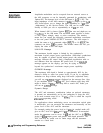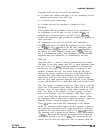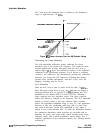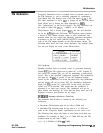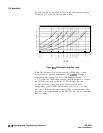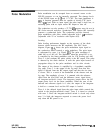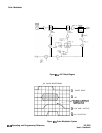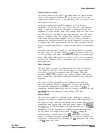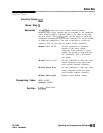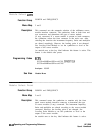
FM Modulation
FM Modulation
Frequency modulation can be accepted from an external source at
the FM connector or can be internally generated by synthesizers
with Option 002. The damage level of the FM input is
4~15
V DC.
The input impedance is set to 50R. A jumper on the All FM Driver
board allows you to change the input impedance to 600R.
(See “Adjustments” in the Service Guide.) The FM sensitivity can
be scaled to either 100
kHz/V,
1 MHz/V, or 10 MHz/V.
When internal FM is chosen (Option
OOZ),
the rate and deviation
are set by softkeys in the FM menu. The waveform menu provides
a choice of sine, square, triangle, ramp, or noise waveforms. The
monitor menu lets you output the internally generated modulation
waveforms to the rear panel AM/FM OUTPUT connector. The
scale of the FM output depends on the FM deviation chosen. The
following table shows the scale versus deviation. The monitor menu
also lets you display the value of the FM deviation.
FM Coupling
Whether provided from an external source or generated internally
(Option 002), the FM system can be either AC or DC coupled. If
you choose AC coupled FM, you will be modulating a phase-locked
carrier. This is the specified synthesized operation. The modulation
rate must be 100 kHz or greater. If not, the frequency changes
caused by the modulation are inside the phase-lock loop bandwidth
and the output will not be linear FM. For modulation frequencies
below 100 kHz, choose DC coupled FM. In this mode, the phase
locked loop is de-activated. This means that the synthesizer is
operating as an open loop sweeper. The synthesizer will not be
phase locked, and therefore, be aware that the phase noise and CW
frequency accuracy specifications do not apply.
OVERMOD
Message (Maximum Deviation)
The maximum FM deviation is limited by the following two
conditions:
l Maximum FM deviation must be less than 8 MHz and
l Maximum FM deviation must be less than n x 5 x FM rate
(refer to the “Frequency Bands” specification for the value of n).
The following chart shows the limits of each band given these two
conditions. For example, in band 1 at a 1 MHz FM rate, the FM
deviation must be less than 5 MHz.
n (1) x 5 x FM Rate (1 MHz)
=
5 MHz.
HP 8360
User’s Handbook
Operating and Programming Reference
M-17



